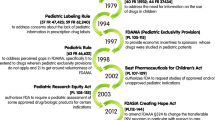Abstract
Issues of language and literacy represent a significant barrier to participation in clinical research. This study was designed to explore whether illustrating the permission/assent (P/A) document offers an alternative strategy for communicating study related information to underserved populations. Participants were verbally introduced to a mock study and asked to review the corresponding P/A form with companion pictorials. Questionnaires were used to examine whether the form addressed essential elements of a P/A (as defined under the Code of Federal Regulations) and evaluate the effectiveness of the companion pictures. Over 93 % of participants agreed that the form addressed the required basic elements of a P/A. Pictures depicting study procedures were highly effective while images depicting nebulous concepts such as research and voluntariness were deemed less effective. The medical research community can expand enrollment opportunities to underserved populations by using visual aids to complement the informed consent process.


Similar content being viewed by others
References
Bourgeois FT, Murthy S, Ioannidis JPA, et al. Clinical drug trials: a paucity of pediatric representation mismatched to global disease burden [abs]. Boston, MA: PAS meeting; 2012.
Schmucker DL, Vesel ES. Are the elderly underrepresented in clinical drug trials. J Clin Pharmacol. 1999;39:1103–8.
Lang TA, White NJ, Hien TT, et al. Clinical research in resource-limited settings: enhancing research capacity and working together to make trials less complicated. PLoS Negl Trop Dis. 2010;4:e619.
Hussain-Gambles M, Atkin K, Leese B. Why ethnic minority groups are under-represented in clinical trials: a review of the literature. Health Soc Care Commun. 2004;12:382–8.
Wendler D, Kington R, Madans J, et al. Are racial and ethnic minorities less willing to participate in health research? PLoS Med. 2006;3:e19.
Lipton LR, Santoro N, Taylor H, et al. Assessing comprehension of clinical research. Contemp Clin Trials. 2011;32:608–13.
Nundy S, Gulhati CM. A new colonialism? Conducting clinical trials in India. NEJM. 2005;352:1633–6.
Travaline JM, Ruchinskas R, D’Alonzo GE. Patient–physician communication: why and how. J Am Osteopat Assoc Clin Practice. 2000;105:13–7.
Minnies D, Hawkridge T, Hanekom W, et al. Evaluation of the quality of informed consent in a vaccine field trial in a developing country setting. BMC Medical Ethics. 2008;9:15.
Fitzgerald DW, Marotte C, Verdier RI, et al. Comprehension during informed consent in a less-developed country. Lancet. 2000;360:1301–2.
Chappuy H, Baruchel A, Leverger G, et al. Parental comprehension and satisfaction in informed consent in paediatric clinical trials: a prospective study on childhood leukaemia. Arch Dis Child. 2010;95:800–4.
Erraguntla V, De la Huerta I, Vohra S, et al. Parental comprehension following informed consent for pediatric cataract surgery. Can J Ophthalmol. 2012;47:107–12.
Schenker Y, Wang F, Selig SJ, et al. The impact of language barriers on documentation of informed consent at a hospital with on-site interpreter services. J Gen Intern Med. 2007;22(Suppl 2):294–9.
Hunt LM, de Voogd KB. Are good intentions good enough? Informed consent without trained interpreters. J Gen Intern Med. 2007;22:598–605.
Resnik DB, Jones CW. Research subjects with limited English proficiency: ethical and legal issues. Account Res. 2006;13:157–77.
Lang T, Siribaddana S. Clinical trials have gone global: is this a good thing? PLoS Med. 2012;9:e1001228.
Ryan C. Language use in the United States: 2011. U.S. Census Bureau. August 2013. https://www.census.gov/prod/2013pubs/acs-22.pdf. Accessed 5 Aug 2014.
Kirsch IS, Jungeblut A, Jenkins L, et al. Adult literacy in America. National Center for Education Statistics, U.S. Department of Education. April 2002. https://nces.ed.gov/pubs93/93275.pdf. Accessed 5 Aug 2014.
National Research Council. Responsible research: a systems approach to protecting research participants. Washington, DC: The National Academies Press; 2002. p. 123–7.
Protection of Human Subjects—Elements of Informed Consent, 21 C.F.R. pt. 50.25 (2011).
Davis S, Wright PW, Schulman SF, et al. Participants in prospective, randomized clinical trials for resected non-small cell lung cancer have improved survival compared with nonparticipants in such trials. Cancer. 1985;56:1710–8.
Karjalainen S, Palva I. Do treatment protocols improve end results? A study of survival of patients with multiple myeloma in Finland. BMJ. 1989;299:1069–72.
Heiat A, Gross C, Krumholz H. Representation of the elderly, women, and minorities in heart failure clinical trials. Arch Intern Med. 2002;162:1682–8.
Flory J, Emanuel E. Interventions to improve research participants’ understanding in informed consent for research: a systematic review. JAMA. 2004;292:1593–601.
Ryan RE, Prictor MJ, McLaughlin KJ, et al. Audio-visual presentation of information for informed consent for participation in clinical trials. Cochrane Database of Systematic Reviews 2008; 1:CD00371.
Acknowledgments
Sincere appreciation is extended to Mike Venneman, Linda Taloney, and Gabriela Flores who assisted with the coordination of this study; Rebecca Ballard for her thoughtful review of the project; and Dee Jo Miller for thoughtful discussions about the concept.
Author information
Authors and Affiliations
Corresponding author
Rights and permissions
About this article
Cite this article
Abdel-Rahman, S.M. Evaluating the Effectiveness of an Illustrated Permission/Assent Form. J Immigrant Minority Health 17, 1504–1508 (2015). https://doi.org/10.1007/s10903-014-0116-6
Published:
Issue Date:
DOI: https://doi.org/10.1007/s10903-014-0116-6




